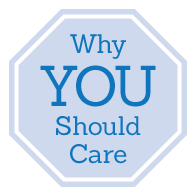[wpcol_1fifth id=”stop” class=”” style=””]
 [/wpcol_1fifth]
[/wpcol_1fifth]
[wpcol_4fifth_end id=”” class=”” style=””]
• $2000/year in first year tolls for commuters will rise steadily for decades
• Clark county paying over $200 million for Oregon highway infrastructure
• CRC project loaded with unrelated pork and dubious fiscal management
[/wpcol_4fifth_end]
The costs currently estimated by the CRC are over three times what they should be—to solve current transportation objectives and lay a proper foundation for the future. In fact, the CRC’s own budget shows that the cost of the bridge portion of the project is approximately $600 million. We question the need to spend $3.5 billion in capital costs and over $2.0 billion in interest, toll collection costs and operation and maintenance on this structure.
This statement is influenced by many factors that are listed below—and ultimately presumes a different approach to solve the current transportation problems. Other approaches are shown under the tab above called Alternate Plans. This bloated budget is a continuation from the extremely poor use of planning funds described under the page on this website called CRC Mismanagement. Specific issues are:
- History of Cost Overruns: One only needs to look at other mega-projects within Washington and around the United States to understand the history of large cost overruns. The CRC estimates show that this $3.5 Billion bridge is only the beginning. Their Capital and Operating Finance Plan calls for interest on debt service, toll collection costs, and operation and maintenance of the bridge to exceed $2.0 billion. This equates to a $5.5 billion project before cost overruns. Established experts estimate that costs could approach $10 billion dollars—and links below provide the details.
- Tolls: CRC revenue projections (mainly from tolls) are unrealistic as they are driven by compounding unrealistic assumptions. Did you know that the State of Washington has used the same vendor (CDM Smith) to project traffic and revenue for projects like the Tacoma Narrows Bridge and SR520? Did you know that both of these projects have experienced significantly lower actual traffic and tolling revenue; necessitating either additional tolling, late payments on debt, and/or dips into the State’s other funds in order to make bond payments? Currently, the CRC’s estimate assumes the average I-5 bridge commuter will be forced to pay about $2,000/year. What happens when tolling revenues are less than expected? Toll payers will be forced to pay more.
- Collateral damage: The CRC’s huge proposed cost and illegitimate revenue model (tolling) will weaken or eliminate other transportation projects for many years to come—in Washington and Oregon. Overall the effect of these overruns will be a negative impact to all local government’s finances as more resources are directed at debt service to the bridge.
- Pork: This project is loaded with typical big-government opportunistic pork—that is completely unrelated things stuffed in to the plan.
For Further Details on CRC Proposed Bridge Costs
Cost analysis
- The business case against the CRC
- Willamette Week editor Mark Zusman speaks the “inconvenient truths” that Columbia River Crossing proponents refuse to confront.
- Columbia River Crossing is a bad deal for Oregon: Guest opinion
- Toll-dependent Columbia River Crossing halted by Roach inquiry
- CRC Financial Analysis by Impresa, Inc./Joseph Cortright – economic analyst and an expert in regional economic analysis and development
- Cortright’s testimony to the Joint Legislative Oversight Committee on Columbia River Crossing
- Details behind the $2000/year toll estimate for commuters
- Acuity Group report on Columbia River Crossing – Funding Plan Analysis
Traffic projections to justify the project seriously flawed
- CRC traffic forecasts are wrong, truck traffic is down, ODOT’s gas tax forecast wildly off, and vehicle travel is down
- Traffic rose just 1 percent from 2002 to 2011, according to the most recent counts available, even as the county’s population grew 17 percent.
- Actual data show CRC traffic forecasts are wrong.
Debt capacity
- HB2260 “The CRC Blank Check Act of 2013” – This bill, by itself, gives ODOT essentially unlimited authority to borrow as much as it wants for CRC.
- Just in Time for the CRC: State Will Have New Debt Capacity
History of MEGAPROJECTS
- Columbia River Crossing: A boondoggle that Oregon doesn’t need
- Is P.T. Barnum Right on the CRC Boondoggle? Evan Manvel
- From a Cambridge University Press report “Megaprojects and Risk”:
- Edward Merrow in a RAND study of megaprojects


